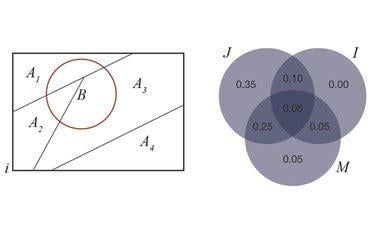MOOC List is learner-supported. When you buy through links on our site, we may earn an affiliate commission.

MOOC List is learner-supported. When you buy through links on our site, we may earn an affiliate commission.
We’ll then discuss the probability axioms that serve as the basis for all of our subsequent work – what makes probability tick? That discussion will give us the tools to study elementary probability counting rules, including permutations and combinations. We’ll use these rules to work on various cool applications, including poker probability calculations and baseball line-ups!
The next venues on our tour are the concepts of independence and conditional probability, which allow us to see how the probabilities of different events are related to each other, and how new information can be used to update probabilities. The course culminates in a discussion of Bayes Rule and its various interesting consequences related to probability updates.
This course is part of the Probability/Random Variables Professional Certificate.
What you'll learn
Upon completion of this course, learners will be able to:
• Review Bootcamp lessons based on set theory and calculus
• Identify underlying probability axioms
• Apply elementary probability counting rules, including permutations and combinations
• Recall the concepts of independence and conditional probability
• Determine how to update probabilities via Bayes Rule
Prerequisites:
You will be expected to come in knowing a bit of set theory and basic calculus. But don’t worry too much – we’ll provide bootcamps on that material in order to make the class pretty much self-contained. In addition, this course will involve a bit of computer programming, so it would be nice to have at least a little experience in something like Excel, just to bring back the programming memories.
Syllabus
Module 1: Course Introduction + Bootcamps
• Lesson 1: Introduction to Probability and Statistics
• Lesson 2 [OPTIONAL]: The Joy of Sets Bootcamp
• Lesson 3 [OPTIONAL]: Calculus Bootcamp: Introduction + Derivatives
• Lesson 4 [OPTIONAL]: Calculus Bootcamp: Integration and Beyond
Module 2: Getting Started with Probability
• Lesson 1: Experiments, Sample Spaces, and Events
• Lesson 2: What is Probability?
• Lesson 3: Basic Probability Results
• Lesson 4: Finite Sample Spaces
• Lesson 5: Counting Techniques: Baby Examples
• Lesson 6: Counting Techniques: Permutations
• Lesson 7: Counting Techniques: Combinations
Module 3 (cont’d): Getting Started with Probability
• Lesson 8: Hypergeometric, Binomial, and Multinomial Problems
• Lesson 9: Permutations vs. Combinations
• Lesson 10: The Birthday Problem
• Lesson 11: The Envelope Problem
• Lesson 12: Poker Problems
• Lesson 13: Conditional Probability
• Lesson 14: Independence Day
• Lesson 15: Partitions and the Law of Total Probability
• Lesson 16: Bayes Theorem
MOOC List is learner-supported. When you buy through links on our site, we may earn an affiliate commission.
MOOC List is learner-supported. When you buy through links on our site, we may earn an affiliate commission.
